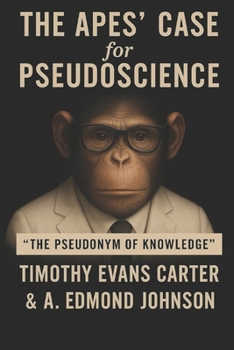The Apes' Case for PseudoScience: "The Pseudonym of Knowledge"
This work investigates the foundational conflict between two drastically different views of Earth's history: the scientific consensus that the Earth is 4.54 billion years old and the young-Earth creationist view based on Biblical genealogies, which suggests an age of roughly 6,000 to 10,000 years.
The Scientific Argument ("The Apes' Case"):
Evolutionists-referred to as "the Apes"-argue for an ancient Earth using a variety of empirical tools and disciplines:
Radiometric Dating: Techniques like uranium-lead and potassium-argon dating show consistent results pointing to a multi-billion-year-old Earth.
Geological Timescales & Fossil Record: Stratified fossils reflect a gradual evolutionary timeline over hundreds of millions of years, incompatible with a young Earth.
Starlight and Cosmic Distances: Observable light from galaxies billions of light-years away implies a universe of similar age.
Ice Cores and Tree Rings: These natural records show uninterrupted sequences far exceeding 10,000 years.
Cross-Disciplinary Agreement: Independent fields-astronomy, geology, biology, physics-align in supporting an ancient Earth and evolutionary framework.
They argue that young-Earth creationism fails to provide a cohesive alternative model that can explain this convergence of evidence.
The Author's Rebuttal: A "Decay Age" Perspective
The authors challenge these scientific assumptions, particularly the uniformity of decay rates and the interpretation of time:
Decay vs. Chronology: They argue that radiometric decay doesn't equate to chronological time, as decay rates may have varied due to divine intervention.
Biblical Time Ratio: Citing 2 Peter 3:8 and Psalm 90:4 ("a day is as a thousand years"), the authors propose that God manipulates time, making Earth appear older than it is.
Divine Interventions: Events like Lucifer's fall, the six-day re-Creation, the Fall, and the Flood may have introduced accelerated decay and apparent age.
Alternative Time Framework: This theological model rejects the materialistic, constant-time assumptions of modern science and replaces them with a spiritual, dynamic chronology governed by God.
Why This Matters:
The age of the Earth is not a trivial detail-it affects worldview, theology, and trust in Scripture. In today's culture, believers often feel forced to choose between scientific credibility and Biblical fidelity. This book argues they don't have to. By integrating a theological view of time with scientific observation, it presents a model in which a young Earth can still appear old under conventional dating methods-without compromising either faith or reason.
Purpose of the Book:
This work aims to uphold the authority of Scripture while critically examining scientific assumptions. It proposes a harmonized "decay age" model that incorporates both observed data and divine timing, encouraging readers to rethink both the nature of time and the interpretive lens through which we view history. Ultimately, it advocates for confidence in Scripture as a key to correctly understanding the natural world.





